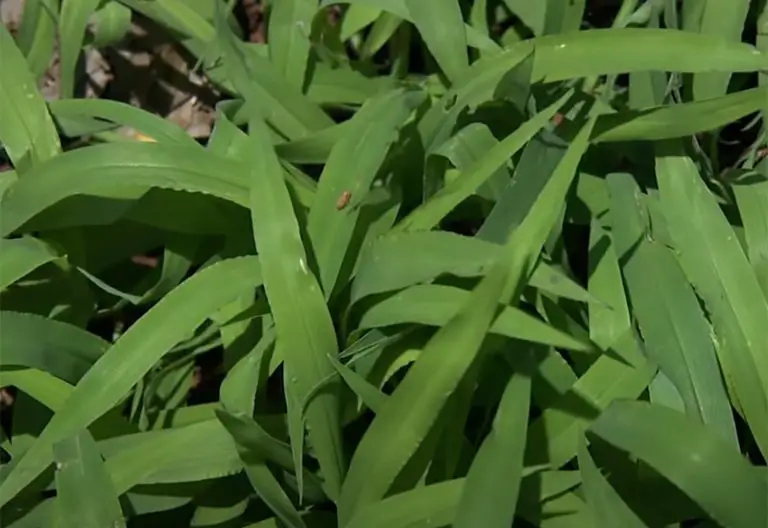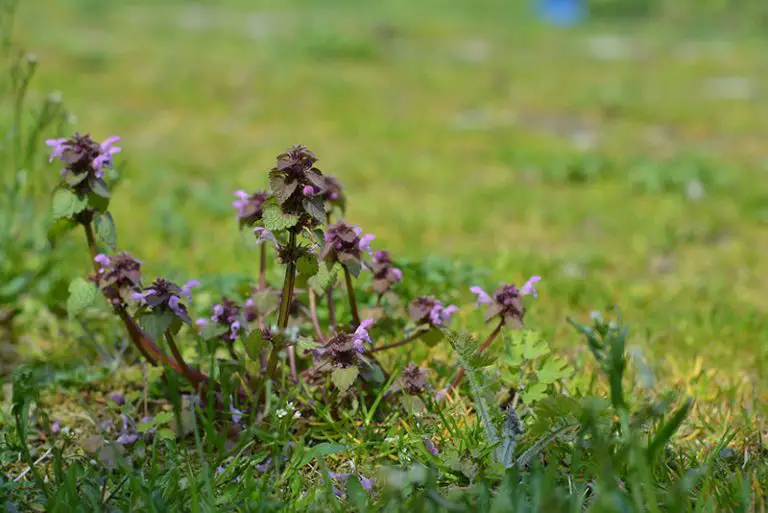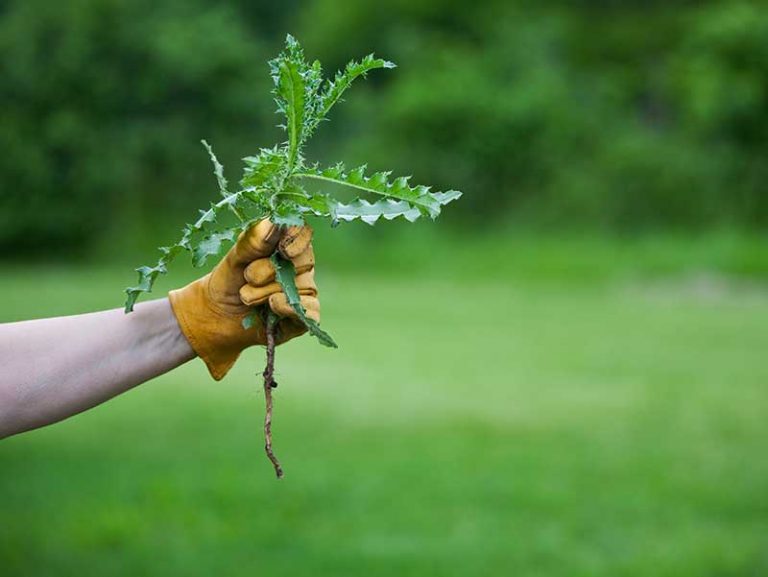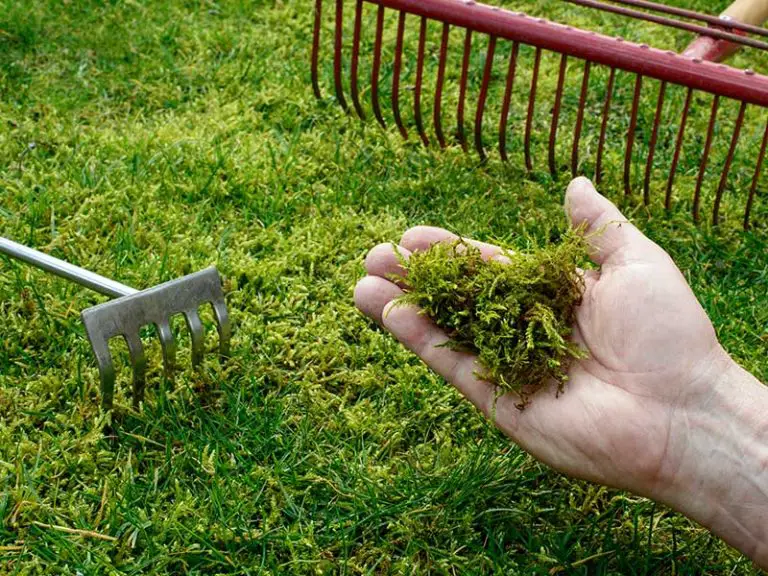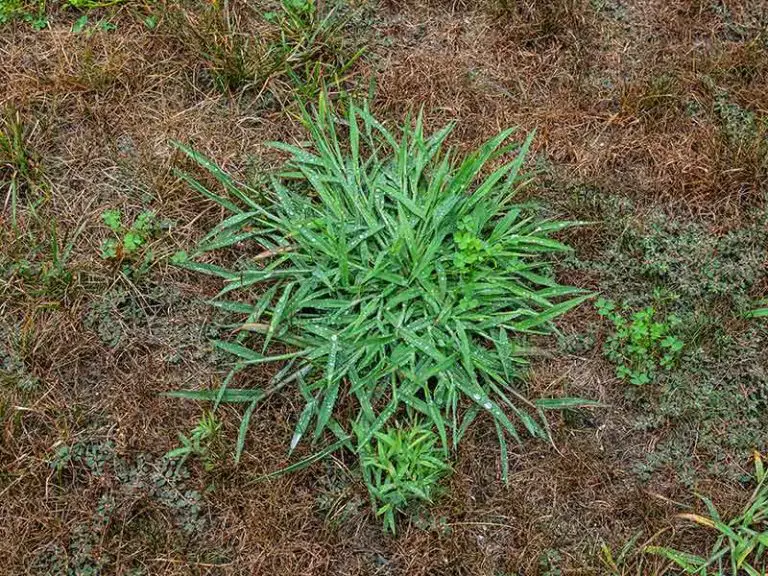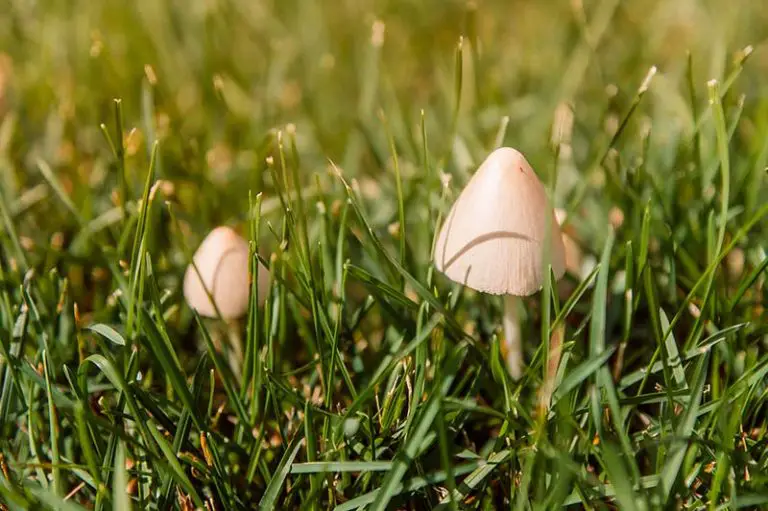7 Natural Ways to Make Homemade Weed Killer
Using a herbicide only containing natural ingredients is the best choice when it comes to weed control, regardless of whether you’re an organic gardener or not. In place of the toxic chemicals that synthetic weed killers contain, natural weed killers use organic ingredients that are safer to work with and better for the environment.
Many of the substances used in natural weed killers are common items you may already have laying around your home. For instance, you can create homemade natural weed killer from lemon juice, salt, vinegar, baking soda, and borax. Alternative methods of natural weed control include manual removal, mulching the lawn or garden, or growing a cover crop.
What is a Natural Weed Killer?
Natural weed killer is a type of herbicide made from entirely organic materials that can kill unwanted vegetation on contact. Natural weed killers are a great alternative to chemical products when tackling a garden or lawn full of weeds. While chemical herbicides contain harsh substances such as glyphosate and toxic surfactants, natural weed killers are made from ingredients like salt, vinegar, and lemon juice.
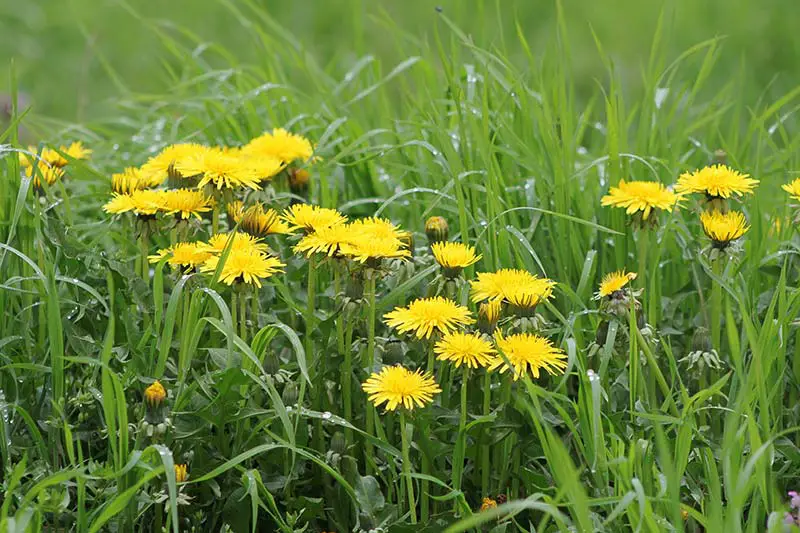
Why Should You Use a Natural Weed Killer?
When it comes to weed control, you have a lot of different methods at your disposal that involve both natural and chemical means.
Why Shouldn’t You Use Chemical Weed Killer?
Chemical weed killers are those that contain a mixture of synthetic chemicals to kill weeds selectively or all plants non-selectively. While chemical weed killers are often powerful and fast-acting, there are many disadvantages to these products outweighing their benefits.
Firstly, the main issue with using chemical products is the potentially harmful consequences that arise from product runoff. Runoff occurs when it rains after you apply a chemical weed killer to your lawn or garden; the rainwater carries the chemicals away from your yard before contaminating waterways and the local environment. These chemicals can be extremely harmful to the surrounding plant and wildlife.
Chemical weed killers also pose a hazard to human health. Runoff may cause the harmful chemicals to contaminate the groundwater supply for your local area before they end up in your tap water. Accidental inhalation or ingestion of chemical weed killer products may cause serious illness, and in the worst cases, death; the severity of the illness depends on the type of product, amount consumed, and the age of the person.
Lastly, the ingredients in chemical weed killers can be incredibly harsh on the vegetation in the area you’re treating. Accidentally splashing weed killer onto wanted grass or plants may cause foliar burn, discoloration, or death of the plant completely.
What are the Benefits of Natural Weed Killer?
Natural weed killers, on the other hand, contain organic ingredients derived from all-natural sources. Examples of common natural weed killer ingredients include salt, vinegar, lemon juice, and corn meal gluten. Compared to synthetic products, natural weed killers are far more environmentally-friendly and much safer for regular use in your yard. As they contain no harsh chemicals, there is no need to worry about harming the local environment with product runoff, nor do you need to worry about the potential hazards to human or pet health.
The gentler ingredients in natural weed killers are safer to use on your lawn or garden. Some methods may even improve the condition of your soil; for example, adding a layer of mulch or compost will help not only to suppress weed growth, but will also condition and fertilize the soil gradually as it decomposes. This results in healthier plants, which in turn strengthens the planting bed or lawn even further against future weed growth.
In short, natural weed killers are simply safer for you, your yard, and your local environment. They are also the more affordable option for weed control; chemical products can become very costly, especially if you need regular or repeated applications. Natural weed killers tend to be cheaper and they are easy to make yourself at home from items you may already have laying around. We explain some different methods on how to make your own natural weed killer in the following section.
We should note that although chemical weed killers are the less preferable choice, they are sometimes necessary for very severe or persistent weed infestations. Our advice is to try every natural option of weed control before resorting to a chemical product.
How to Make Natural Weed Killer
There is a range of different types of natural weed killers you can make yourself easily at home. We explain 7 different methods on how to make natural weed killers that work to combat a range of weeds.
1. How to Kill Weeds With Boiling Water
Using boiling water is a simple but effective way to kill weeds naturally. As boiling water will kill any plant on contact, this method is ideal for treating paths or paved areas such as your driveway or sidewalk. It’s extremely easy to carry out and one of the cheapest options of natural weed control.
Best For: Isolated weeds, e.g. borders, driveways, paths, paving, and patios.
Method: Boil two quarts of water, or as much as you need to treat all of the weeds in the area. Use a tea kettle to boil the water, then pour it directly onto the vegetation you want to kill; this is the safest and most convenient way to carry out this method due to the spout on the kettle. Pour enough water that it seeps deep down into the root systems of the weeds. Remember that the boiling water will kill all plants on contact – take care to concentrate it only on unwanted growth.
2. How to Make Lemon Juice Weed Killer
Lemon juice is an effective ingredient when used in homemade natural weed killer. The citric acid in the lemon juice dries up plant foliage, causing weeds to shrivel before they die off. This is another option of natural weed control ideal for isolated patches of weeds.
Best For: Isolated weeds, e.g. pavements, paving, paths, and driveways.
Method: Either purchase some ready-squeezed lemon juice from the grocery store, or squeeze about five lemons to create your own. Place the lemon juice in a spray bottle then use it to douse the foliage of the weeds; the weeds should die off within a couple of days. This natural weed killer is most effective if you apply it on a sunny day, as the sun will enhance the burning effect of the lemon juice on the weed foliage.
3. How to Make Natural Weed Killer with Salt
In high doses, salt (sodium chloride) can be very harmful to plants and is therefore an effective ingredient in natural weed killer. It kills weeds by dehydrating them; however, it will also dehydrate any other plants nearby, and is therefore not suitable for garden beds or lawns. Again, this method is best for isolated weeds on paving and pathways.
Best For: Isolated weeds, e.g. pavements, paving, paths, and driveways.
Method: To use salt as a weed killer, you must first dissolve the salt in water. Make a mixture combining the ingredients in a ratio of one part salt to three parts water; you can increase the strength of the solution by adding more salt if you need to. Use regular household table salt for this method, and avoid using rock salt, sea salt, or Epsom salts. Place the mixture into a spray bottle and apply it directly to the weeds’ foliage. Again, this method is most effective if you carry it out on a sunny day.
4. How to Make Natural Weed Killer With Vinegar
Vinegar is a very common natural ingredient used in homemade weed killers. The acetic acid in the vinegar kills weeds and plants by dissolving the cell membranes of the plant tissue; this eventually causes the complete desiccation and death of the vegetation.
Best For: Younger annual weeds on pavements, paving, paths, and driveways.
Method: Types of vinegar you can use to kill weeds include distilled white vinegar, apple cider vinegar, or cleaning vinegar. Whichever vinegar you use should contain acetic acid at a concentration of at least 11% in order for it to work as a weed killer. Mix the vinegar with about three spoonfuls of dishwashing liquid; this will behave as a surfactant, helping the solution to stick to the surface of the weed’s foliage for longer. Place the mixture into a spray bottle and apply it carefully to individual weeds.
5. How to Kill Weeds with Baking Soda
A dusting of baking soda (sodium bicarbonate) is another simple way to control weed growth on paths and pavements. Baking soda works as a weed killer as it contains a high concentration of sodium. Like the table salt method, the sodium in the baking soda kills weeds by dehydrating them until they die off. This also makes baking soda unsuitable for use around any vegetation you wish to keep healthy.
Best For: Isolated weeds, e.g. pavements, paving, paths, and driveways.
Method: Take some regular baking soda and sprinkle it wherever you wish to control weed growth. Sweep the baking soda to concentrate it into the cracks between paving slabs for more targeted control.
6. How to Make Borax Weed Killer
Borax is a naturally occurring mineral substance derived from boric acid. The original primary use of this substance was as an ingredient in cleaning products. Although it’s now less popular as a cleaning agent, borax still stands as an effective ingredient in natural weed killers. It has a high pH level of 9.5, making it extremely alkaline, which causes plants and weeds to die off.
Best For: Killing ‘Ground Ivy’ (a.k.a. ‘Creeping Charlie’).
Method: Mix 1 cup of powdered Borax with 2 gallons of water. Place this solution in a spray bottle to use it as a topical weed killer. Take care when applying the solution as it will kill any other vegetation it comes into contact with.
7. How to Suppress Weeds with Corn Gluten Meal
Corn gluten meal is less of a weed killer, behaving instead as a weed suppressor. It is a powdered substance that is a byproduct leftover after the milling of corn. Use this substance as an alternative to pre-emergent herbicide to prevent the growth of weeds in a lawn or garden.
Best For: Lawns, particularly for suppressing the growth of crabgrass.
Method: To apply corn gluten meal, all you need to do is spread the powder over the soil surface. After spreading an even layer of the meal, water it in, adding about ¼ inch of water. With this method, timing is crucial; you must coincide your application with the germination of the weed you’re trying to combat. It’s also important to apply the corn meal when the weather is forecast to be dry for a few days following the application; this is to ensure the meal kills the entire roots of the weeds.
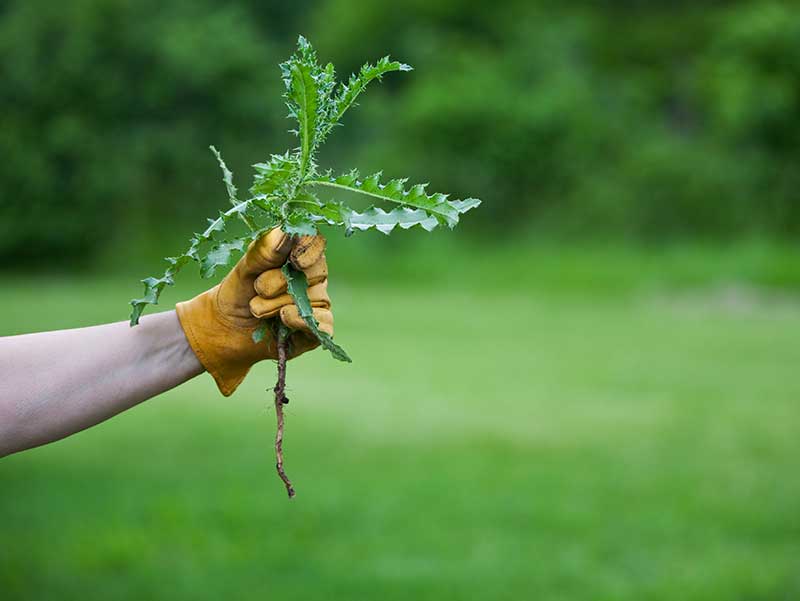
Alternative Methods of Natural Weed Control
Beyond making your own weed killer, there are a few more alternative methods of natural weed control. These involve manually removing the weeds by hand, disrupting their process of photosynthesis, and beheading them before they go to seed.
1. Torch Weeds
A natural but highly effective way to get rid of weeds is to scorch them using a propane torch. The high-powered hot flame will kill the weeds completely by scorching them down to the root. This method is obviously one of the more hazardous approaches to weed control; you should take extreme caution when using such a tool, especially in dry or windy conditions, or if you’re working on a brushy area.
Best For: Isolated weeds, e.g. pavements, paving, paths, and driveways.
Method: There is a range of long-handled propane torches available for purchase that are designed specifically for this purpose. These torches enable you to safely scorch the weeds without needing to stoop down. As we’ve just mentioned, it’s vital to take extreme caution when carrying out this method. You shouldn’t carry it out on windy and/or overly dry days, neither should you carry it out when children or pets are present.
2. Manually Pull Weeds By Hand
Pulling up the weeds by hand is the age-old traditional method of natural weed removal. While this method is the most laborious and time-consuming, it is also one of the most effective ways to keep weed infestations at bay. Pulling up unwanted growth as soon as you spot it will help to keep your lawn and garden weed-free.
Best For: Smaller scale weed infestations, instant ad-hoc weed removal.
Method: Wearing a thick pair of protective gloves, use a trowel to dig down into the soil along the weed’s roots. Loosen the soil around the root system; this is easier if the soil is slightly moist. Grasp around the upward growth of the weed and pull gently but firmly to remove the whole plant, along with the entirity of its root system, from the soil. If removing perennial weeds such as nettles or bindweed, you will need to dig deeper using a garden fork. Make sure to remove every part of the weed from the soil, including stems, leaves, and seeds. Leaving any of the plant matter behind in the soil gives the weeds the opportunity to resprout soon after your attempt at removing them.
3. Mulch Lawn or Garden Bed
You can get rid of weeds in a lawn or garden bed using a layer of organic mulch. This is a great option for several reasons, but primarily because it offers weed control without harming the surrounding plants. On top of this, the mulch will actually improve the plants’ health as it breaks down over time, releasing its nutrients into the soil. This will further strengthen the lawn or planting bed’s resistance to weed infestations. Although this method isn’t a quick-fix, it provides many long-term benefits for weed prevention and control.
Best For: Small to large weed infestations in lawns and garden beds.
Method: If you’re tackling a larger infestation of weeds, mow them as short as possible before laying your mulch. Cover the lawn or garden bed with a layer of mulch about 2 to 3 inches in thickness. There is a range of organic materials you can use as mulch, including compost, leaves, grass clippings, straw, sawdust, and pine needles.
4. Smother Weeds with Cardboard or Newspaper
You can rid a garden bed of weeds using a layer of cardboard or newspaper to smother them. Like all plants, weeds need access to sunlight in order to grow via the process of photosynthesis. By cutting off their access to this light, you can essentially starve the weeds to death. Cardboard or newspaper is an ideal natural material to use for this purpose as it will break down gradually over time; as it breaks down, the cardboard or newspaper will release nutrients into the soil, behaving as an organic mulch. Take note that this method isn’t suitable for lawns as it will smother the healthy grass along with the weeds.
Best For: Low growing weeds, e.g. crabgrass or clover.
Method: Using either cardboard, newspaper, or a combination of both, lay your chosen material over the soil surface. If using cardboard, one layer will suffice; if using newspaper, make the layer about 4 sheets of paper thick. The covering will break down gradually, enriching the ground with a steady supply of slow-release nutrients. When the material has broken down completely, you can add another round of cardboard or newspaper to sustain the weed control effect.
5. Grow a Cover Crop
Cover crops are plants you can grow that behave in the same way as organic mulch to prevent weed growth. Referred to as ‘living mulches’, cover crops can also help to improve the health of the soil they’re growing in. For example, clover is a common cover crop that also posesses nitrogen-fixing properties; this crop will both choke out weed growth as well as increasing the availability of nitrogen in the soil to your other plants. It’s possible to plant clover on an existing lawn to reap the benefits of this crop. Most types of cover crops are in the legume, grass, or grain families.
Best For: Lawns and garden beds.
Method: There are a few different types of plants you can grow as cover crops. The most popular types include clover, cereal rye, and winter wheat. For best results, you should choose a cover crop that is native to your area; you can contact your local plant nursery or extension office to find out more information on this.
6. Grow Taller Grass
A no-effort natural method of weed control in a lawn is to let your grass grow as tall as possible. Mowing your lawn properly and allowing your grass to grow taller will encourage it to grow stronger, more extensive root systems. The thicker growth and longer roots help your lawn to outcompete weed growth more easily. Also, the taller blades provide the soil with more shade from the sun. Without access to sunlight, weed seeds laying on the soil surface are unable to germinate and grow into established weeds.
Best For: Lawns.
Method: Raise the height on your mowing deck to cut your grass to the upper end of its recommended height range. The best height range to cut your grass will depend on your specific grass type; you will first need to identify your grass species before you can cut your grass accordingly.
7. Behead Weeds Before they Go to Seed
Beheading weeds before they go to seed will work as a preventative weed control measure. This is an effective manual method to stave off infestations, particularly with weeds such as dandelions. Right before they go to seed, weeds like dandelions will produce flower heads. If you remove these heads, you prevent the weed from being able to reproduce, thus preventing them from developing into full infestations.
Best For: Dandelion control.
Method: Pick off the flower heads from weeds as soon as you spot them.
What is a Natural Weed Killer that Won’t Kill Grass?
While we have listed a range of different weed control methods, many of these are not suitable for use on lawns. The best method of natural weed control for lawns is to use mulch and corn gluten meal; these substances will kill weeds without killing grass. Refer to the previous sections for more information on using these methods of natural weed control.

